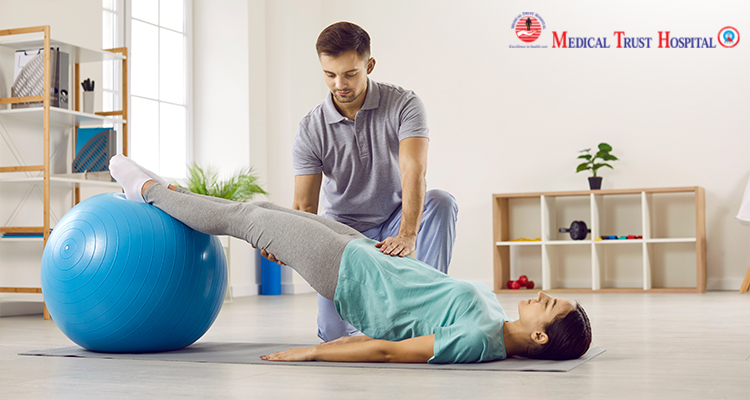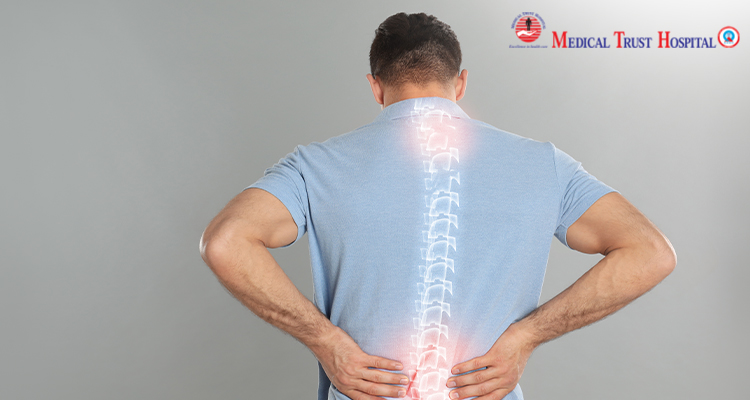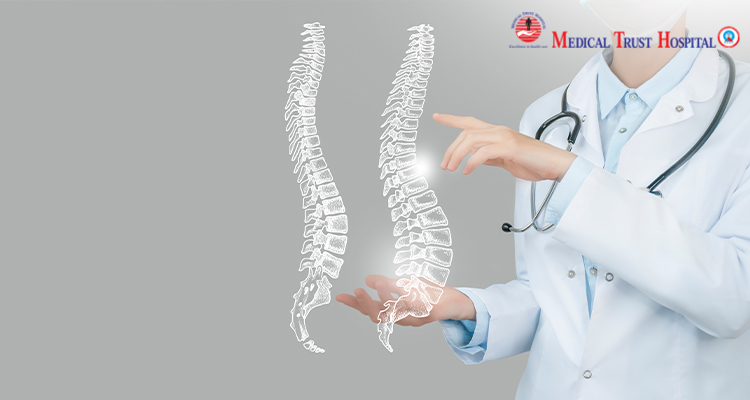Have you been struggling with chronic back pain that just won’t go away? If your doctor has diagnosed you with scoliosis, a sideways curvature of the spine, you may feel at a loss for how to find relief. The good news is Scoliosis treatment in Kochi can help reduce pain and improve mobility. In this article, we’ll explore what scoliosis is, common symptoms to look out for, and the treatments available right in Kochi to help you start living comfortably again. While scoliosis can’t be cured completely, the right treatment plan can make a world of difference. Don’t lose hope – relief may be closer than you think. Keep reading to learn how specialists in Kochi can develop a customized treatment plan based on your unique condition and needs. There are options to suit every budget and level of severity.
Understanding Scoliosis and Its Symptoms
Scoliosis causes an abnormal curvature of the spine that develops most often during adolescence. The spine develops a sideways curve, bending to the left or right, instead of a straight line down the middle of the back.
Some common symptoms of scoliosis include:
- Uneven shoulders: One shoulder blade sticks out more prominently than the other.
- Spinal curvature: The spine rotates and curves to the side rather than straight down.
- Uneven waist: The waist and hips are at different levels.
- Back pain: Mild to severe pain may develop in the back, hips, and legs.
If you notice these signs in a child or teen, it’s best to have them evaluated by an orthopedic doctor. Early detection of scoliosis is key to preventing the curve from worsening and avoiding complications. Diagnosing scoliosis typically involves a physical exam to check for spinal curvatures and rotations, as well as imaging tests like X-rays to determine the degree of the curve.
Treatment options for scoliosis range from observation and bracing to surgery based on factors like the person’s age, the severity of the curve, and whether the curve is still progressing. Bracing and physical therapy are common for smaller curves to help prevent progression. For severe or worsening curves, spinal fusion surgery may be recommended to correct the abnormal curvature and stabilize the spine.
The good news is treatment for scoliosis, especially when started early, can often relieve symptoms and prevent long-term problems. With the right approach, people with scoliosis can remain active and mobile throughout their lives.
Common Scoliosis Treatment Options

If you’ve been diagnosed with scoliosis, the good news is there are several treatment options available to help relieve your symptoms and slow the progression.
Bracing
For mild to moderate curves, bracing is often the first line of treatment for scoliosis in teenagers who haven’t finished growing. Braces work by applying pressure to straighten and support the spine. While bracing can be uncomfortable, the latest designs are more flexible and breathable. Bracing typically continues until bone growth is complete.
Physical Therapy
Specific scoliosis exercises and stretches can help keep your back flexible and strong. A physical therapist can teach you customized exercises to improve your range of motion, strengthen your core muscles, and relieve pain. Many find yoga or Tai Chi also helpful for both flexibility and stress relief.
Medication
For pain management, over-the-counter medications such as acetaminophen or ibuprofen may be suggested. For severe or chronic pain, prescription medication or steroid injections might provide relief when other methods have failed.
Surgery
For severe or progressive curves, especially in adults, surgery may be recommended to correct the abnormal curve and stabilize the spine. The most common procedures are spinal fusion, growth rod insertion for children, or vertebral stapling in teens. Surgery can significantly reduce the abnormal curve in the spine and stop progression, allowing you to live an active life with less pain and disability.
While living with scoliosis can be challenging, the good news is that with the right treatment and management, most people can find relief from their symptoms and avoid long-term complications. The key is to explore all your options and choose what works best based on the severity of your curve and your own unique situation.
Say goodbye to the pain: discover how bracing halts scoliosis

If your scoliosis curve is still progressing, your doctor may recommend bracing to help stabilize and support your spine. Bracing works by applying constant pressure to your back to prevent the curve from worsening. The most common type of brace for scoliosis is the thoracolumbosacral orthosis or TLSO. This brace fits around your torso, hips, and rib cage.
- Wearing a brace can be uncomfortable, especially at first. However, most teens get used to it over time and find relief knowing it’s helping their spine. Your doctor will advise you on how many hours a day you need to wear the brace, often starting around 12-16 hours and decreasing over time as your curve stabilizes.
- It’s important to follow your wearing schedule closely to gain the full benefits. When not wearing the brace, continue to do your normal activities as prescribed by your doctor. You should also continue to exercise and stay active to keep your core muscles strong, which provides additional support for your spine.
- Braces don’t usually correct the curve, but they can prevent it from getting worse as your body grows. The typical treatment period is 2-3 years, until your spine stops growing. Your doctor will re-evaluate your curve with regular X-rays to monitor your progress and make adjustments to your treatment plan.
- If bracing is successful in stabilizing your curve during growth, it can prevent the need for spinal fusion surgery. However, some teens may still require surgery if the curve worsens significantly. The good news is that bracing, when effective, has been shown to reduce the severity of the curve, which can lead to better outcomes from any surgery that may be required.
Talk to your doctor about whether bracing is the right treatment for your scoliosis. When used properly, bracing has been shown to be very effective at controlling curve progression, providing relief and support during your important growing years.
Scoliosis Surgery Methods
If your scoliosis continues to progress or causes severe pain, your doctor may recommend surgery to correct and stabilize your spine. There are several surgical options for scoliosis treatment, depending on the severity and location of your curve.
Spinal Fusion
The most common surgery for scoliosis is spinal fusion. In this procedure, two or more vertebrae are fused together to prevent movement between them. Pieces of bone, bone grafts, or bone substitutes are placed along the spine to encourage the vertebrae to grow together into one solid bone. Rods, hooks, screws or wires are also attached to the spine to hold the vertebrae in the proper position as the fusion occurs.
Over time, the bone grafts fuse the vertebrae together. The rods and other instrumentation can be left in place or removed once the fusion is solid. Spinal fusion can significantly reduce the curvature of the spine and prevent further progression of the deformity. While it limits flexibility, the fusion can relieve pain and improve appearance.
Vertebral Body Tethering
A newer, less invasive option is vertebral body tethering. In this procedure, screws are placed in the vertebral bodies, the round blocks of bone in the front of each vertebra. Cords are attached to the screws, applying tension to help straighten the spine and slow or prevent curve progression, especially in still-growing children and teens. Since it does not fuse the spine, vertebral body tethering allows for continued growth and flexibility. Follow-up surgeries may be needed to adjust the tension in the cords.
- Vertebral body tethering may be an option if the curve is less than 50 degrees. It works best for curves located in the middle of the spine.
- Recovery is quicker than with spinal fusion. Patients can often return to normal activities in 2 to 4 weeks.
- The long-term effectiveness of vertebral body tethering is still being evaluated. It may not provide the same degree of correction and stability as spinal fusion.
Additional surgeries like osteotomies may be recommended for severe scoliosis. Discussing the options with an orthopedic spine surgeon can help determine the best treatment based on your condition and goals. Surgery can be very effective at relieving symptoms and improving quality of life for those with scoliosis.
Finding Top Scoliosis Specialists in Kochi
Finding top scoliosis specialists in Kochi requires some research. Here are a few tips to get you started:
Check Doctor Directories
Look through online doctor directories like Practo, DocPlexus or Lybrate to find spine specialists and orthopedic surgeons in your area who treat scoliosis. Read reviews from other patients to get a sense of their experience, expertise and bedside manner. Make a list of a few doctors who seem like good candidates.
Schedule Consultations
Once you have a list of doctors, schedule consultations with your top choices. This allows you to meet the doctor, ask questions about their experience with scoliosis, and determine if they are the right fit for your needs. Discuss treatment approaches they commonly use, like bracing, physical therapy, chiropractic care or spine surgery if needed. See if they take a collaborative approach to care and listen to your concerns.
Consider Credentials and Experience
The ideal scoliosis specialist will be board certified in orthopedics or neurosurgery, and preferably fellowship-trained in spine surgery. Look for doctors with years of experience successfully treating scoliosis and performing scoliosis correction surgery. Their hospital affiliations and memberships in professional organizations like the Indian Orthopedic Association or Neuro Spine Surgeons Association of India can also be indicators of expertise.
Think About Hospital Options
Pay attention to which hospitals the doctors are affiliated with, as this can impact your treatment and recovery. Look for Joint Commission International accredited hospitals that have dedicated orthopedic, spine and scoliosis treatment centers. They should offer advanced surgical facilities, imaging equipment and physical rehabilitation services to properly care for scoliosis patients.
Trust Your Instincts
Finally, go with the scoliosis specialist you feel most comfortable with and confident in. They will be your partner in managing this condition for the long run, so you want to feel you can openly communicate with them, ask questions and work together on the best treatment plan for you. Finding the right doctor is well worth the effort.
Conclusion
In conclusion, Medical Trust Hospital in Kochi offers the best Scoliosis treatment options for patients. With a team of highly skilled and experienced doctors, advanced technology, and a commitment to patient care, they are able to provide personalized and effective treatment plans. The hospital’s state-of-the-art facilities and comprehensive approach to Scoliosis management make it the top choice for individuals seeking relief from this condition. If you or someone you know is suffering from Scoliosis, don’t hesitate to contact Medical Trust Hospital today and take the first step towards a pain-free future.
